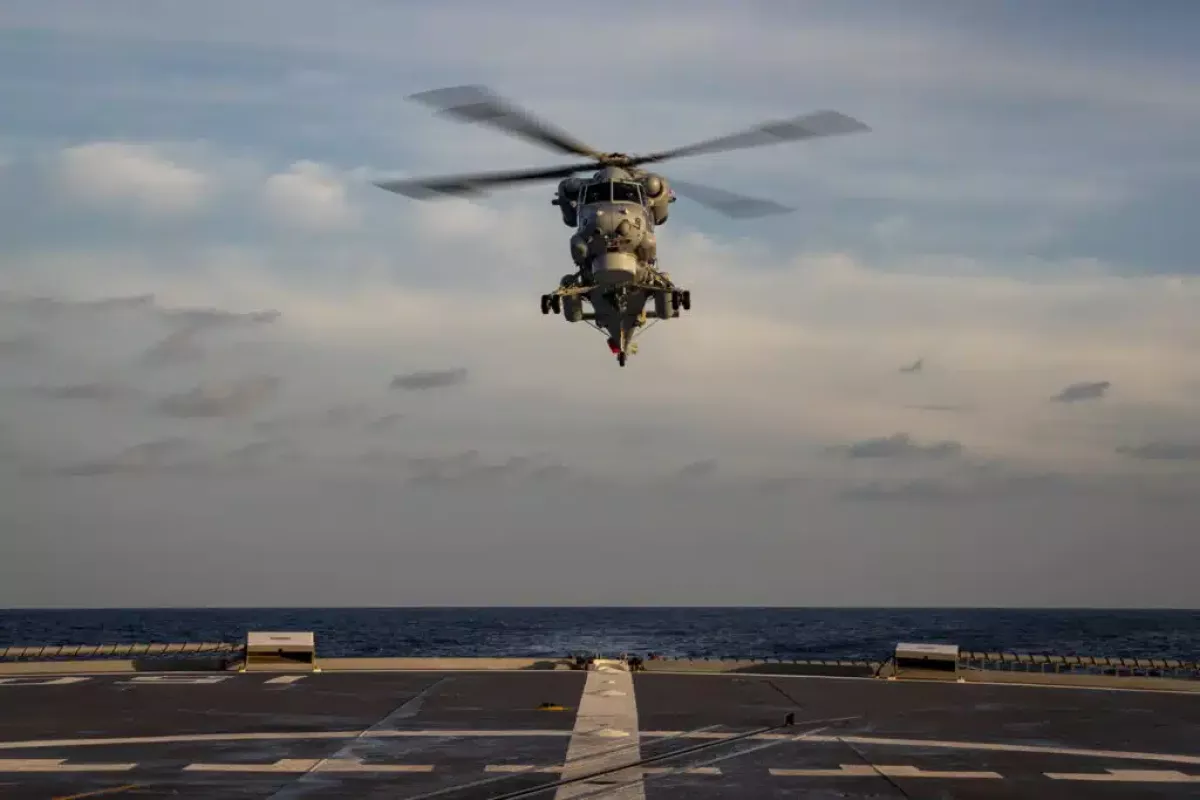New Zealand’s historic anti-ship missile test sets sail for Gulf mission PHOTO / VIDEO
In a new article Naval News unveils that a Penguin anti-ship missile was fired for the first time since the country acquired them over a decade ago in a historic move for the Royal New Zealand Air Force (RNZAF).
The Royal New Zealand Air Force (RNZAF) has successfully launched an AGM-119 Penguin anti-ship missile for the first time since obtaining the weapon over ten years ago.
A No. 6 Squadron SH-2G(I) Super Seasprite helicopter launched the Penguin missile during training for HMNZS Te Kaha (F77)’s upcoming deployment to the Arabian Gulf, where it will join Combined Task Force 150 (CTF150). The Seasprite-Penguin setup provides the full surface strike capability for the RNZN’s two Anzac-class frigates, as the RNZN has opted not to equip its frigates with onboard anti-ship missiles, unlike the Royal Australian Navy.
The helicopter, one of just five operational units in the RNZAF fleet, will perform Intelligence, Surveillance, and Reconnaissance (ISR) and Force Protection roles while deployed with Te Kaha in the Gulf.
Set to be replaced by new maritime combat helicopters by 2028, the RNZAF’s Super Seasprites will face competition from models like the NH-90 NATO Frigate Helicopter, the AW159 Wildcat, the MH-60 Romeo, and a modified Bell 412EP utility helicopter.
In 2013, New Zealand ordered an undisclosed number of AGM-119 Mk 2 Mod 7 missiles from Kongsberg to replace the aging AGM-65 Maverick missiles in the anti-ship role. While deliveries likely took place over the following years, the recent launch marks the first time the RNZAF has used one of its AGM-119 Penguin missiles.
The gap between acquiring the missiles and the recent firing led to the completion of a re-motoring program. Initially, the program was set to wrap up with a live firing in the first quarter of 2024, though this timeline was ultimately adjusted.

The first-ever firing of a Penguin missile follows a similar milestone at the end of 2023, when HMNZS Te Mana (F111) launched two Sea Ceptor missiles in the East Australian Exercise Area. This marked the first time since 2012 that the RNZN had used an air-defense missile. The last recorded air-to-surface missile firing occurred in 2008, when a now-retired SH-2G(NZ) launched two AGM-65 Mavericks.
Both the Sea Ceptor and Penguin missiles will be essential in safeguarding HMNZS Te Kaha during its upcoming six-month deployment to the Arabian Gulf as part of Combined Task Force 150 (CTF150).
By Naila Huseynova








